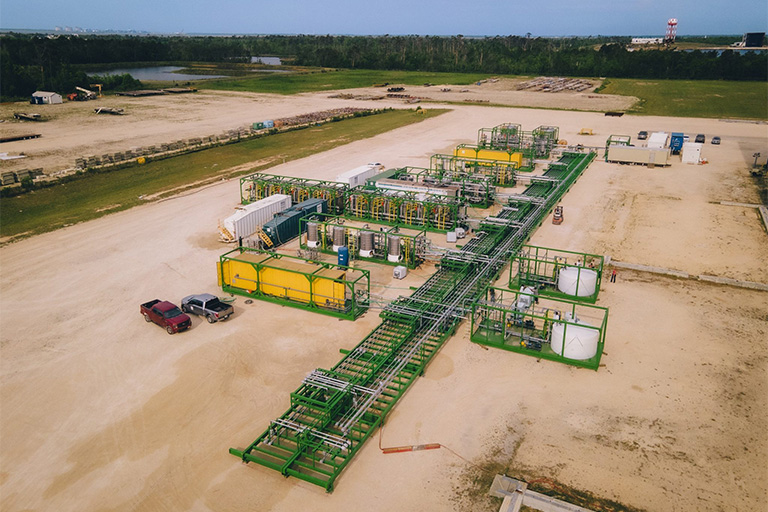The technology of direct lithium extraction has only been fully implemented in one company in the United States, and even there it was an experimental case lasting six months. The government, however, has put its chips on this new way of exploiting the valuable mineral.
“The implementation of technologies that minimise the environmental impact of lithium recovery, such as direct extraction with brine reinjection, will be required. The phrase is part of President Gabriel Boric’s speech during the announcement of the National Lithium Strategy, and includes an unprecedented criterion for evaluating the lithium mining companies with which the State will partner from now on: the use of Direct Lithium Extraction technology, or DLE for its acronym in English.
In recent times, DLE has positioned itself as a more sustainable alternative to the evaporative extraction used by companies such as SQM and Albermale, as it greatly reduces the amount of water used in the extraction process. The formula? Brine reinjection.
The DLE method involves processing the brines to filter out the lithium and then pushing them under pressure hundreds of metres deep back into the salt flats. This ensures the sustainability of the resource and improves extraction efficiency.
The problem? It is a method that has been little tested in the world and completely untested in Chile. The only place where DLE technology has been fully implemented is in the Lake Charles company in Louisiana, United States, and even there it was an experimental case that lasted six months.
In Chile, there is only one established company offering DLE technology: Sorcia Minerals, a subsidiary of the US-based Ensorcia Group Corporation, which in turn is the majority shareholder of International Battery Metals (IBAT). According to Ex-Ante, Ensorcia Group plans to invest an initial capital of USD 500 million in our country to produce 20,000 tons of lithium carbonate.
The founder and CEO of IBAT is John Burba, PhD in physical chemistry, creator of the technology used in Lake Charles, which could soon be applied in Chile.
According to national media reports, Esorcia Group already has its sights set on the Atacama salt flats just before the end of SQM’s contract to exploit lithium there, which is due to expire in 2030. In interviews with Ex-Ante and La Tercera, Rodrigo Dupouy, Ensorcia Group’s president for Latin America, has highlighted his company’s efficiency compared to SQM and Albermale.
“If we were extracting the 442 lt/s of Albemarle in the Salar de Atacama, we would be producing around 130,000 tonnes and not the 40,000 that Albemarle produces today,” Dupouy told La Tercera.
“With respect to the freshwater use of these plants, they only need 0.22 litres per second to operate, which is significantly less than traditional production systems. Moreover, Ensorcia Group plans to supply its plants with desalinated water,” he added to Ex-Ante.
At the moment, the effects and consequences of DLE technology do not generate consensus in the scientific community. The government has indicated that the creation of the Public Research and Technology Institute for Lithium and Salt Flats, which is part of the National Lithium Strategy, could help to clarify the situation.
Environment Minister Maisa Rojas said that “compared to lithium extraction by solar evaporation, direct lithium extraction technologies are presented as an alternative with less impact on water consumption or water footprint”.
In any case, Rojas added that “as it is an incipient technology and has not yet been used at an industrial level, it is something that must be constantly evaluated with the best scientific evidence available, under the precautionary principle”.

